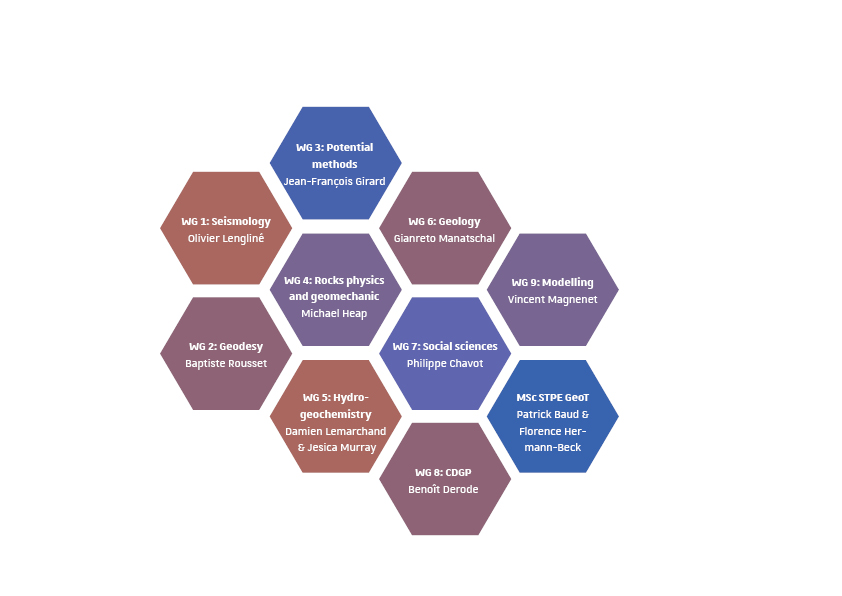The research carried out within the framework of the ITI GeoT combines the geosciences, computer sciences, engineering, and social sciences. We contribute to the development of new carbon-free georesources by working on better ways to characterise, exploit, and monitor deep crustal reservoirs and understanding the evolution of public perception around these projects.
The ITI GeoT is organised into 9 disciplinary scientific working groups. These working groups conduct cutting-edge research, often engaging in inter-group, international and industrial collaboration.
Geosciences
for the energy system
The
Interdisciplinary thematic institutes
of the
University of Strasbourg
&
 &
&
 funded under the Excellence Initiative program
funded under the Excellence Initiative program

 &
&
 funded under the Excellence Initiative program
funded under the Excellence Initiative program
